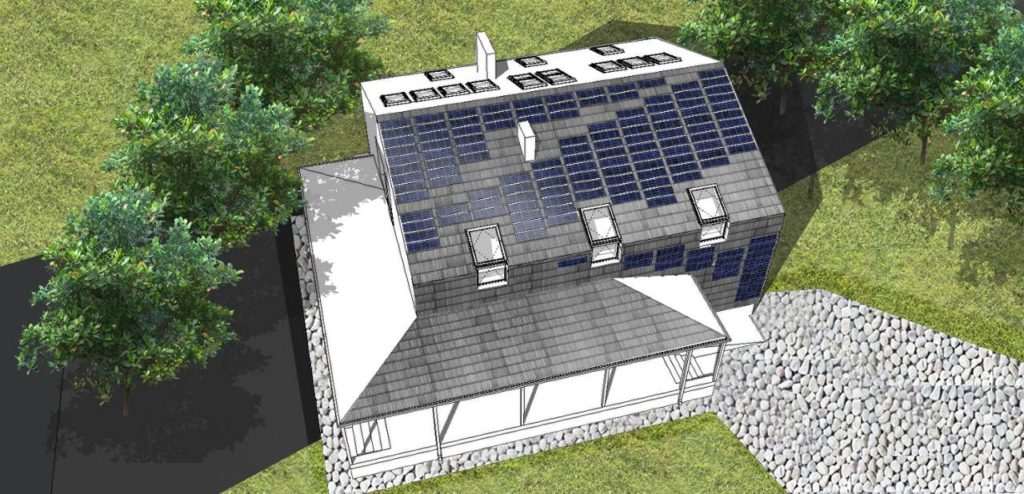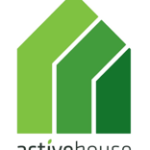PV house


Comfort:
DAYLIGHT
45 m2 facade windows and 24 m2 strategically installed roof windows ensure optimal daylight level in living rooms. Special attention was paid to the room of husband parents. It’s oriented to the East with average daylight factor 3.3-4.1 %. It’s very important for old age people health and wellbeing.
17 roof windows in strategically places allowed to daylight rooms all year round and effectively ventilated the PV house by natural way with stack effect at non heating period.
THERMAL ENVIRONMENT
PV house suggests occupants not less than +21 °C air temperature inside in cold period and not more than +24 °C in hot period by good insulation, optimal orientation and energy efficient heat pump for hating and cooling. It means that score 1 is achieved according Active House Specification.
INDOOR AIR QUALITY
Hybrid ventilation ensured CO2 level inside not more 500 ppm above outdoor concentration and achieve score 1 according Active House Specification

Natural ventilation with stack effect through façade and roof windows is very efficient in period more 12 °C outside

Energy:
ENERGY DEMAND
PV house project annual energy demand for all needs is 49 kWh/(m2·y).
Optimal energy consumption ensured by next solutions:
20 additional Neopor insulation to the 40 cm autoclaved aerated concrete walls. U-value 0.16 W/m2K
30 cm spray foam insulation in the roof. U-value 0.15 W/m2K
15 cm insulation in the ground floor. U-value 0.17 W/m2K
45 m2 facade windows with U-value 0.83 W/m²K
17 roof windows with U-value 0.51 W/m²K
Ground heat exchanger for mechanical ventilation
Mechanical ventilation with heat recovery 85%
Heat pump for heating and cooling with COP 3

ENERGY SUPPLY
Annual energy demand for all needs 49 kWh/(m2·y) means that building 270 m2 will consume not more than 13 200 kWh per year. 52 % of this amount is covered by 138 photovoltaic panels integrated directly in roof panels, which can produce 6 900 kWh per year.

Metrotile Photovoltaics have been tested in compliance with European and International Standards, including draft Dutch Building Standard, EU ‘prescript’ pre standards and has been tested for wind uplift, code F-02-BRE 36-6 and water ingress tests according to procedures in CEN standard PrEN 15601:2006 by the British Research Establishment, UK.The laminates are manufactured in an ISO 9001-2002 certified factory and produced in a TUV IEC 61212 & Safety class 2 approved process.
Environment:
The wood used in the project comes from the forests that are FSC certified. In order to reduce the use of water a structure for use of rain water for toilets and gardening has been established. Aerators and infrared sensors for washbasins were also used. All materials for insulation that were used have a EPD

PV house Active House Radar



